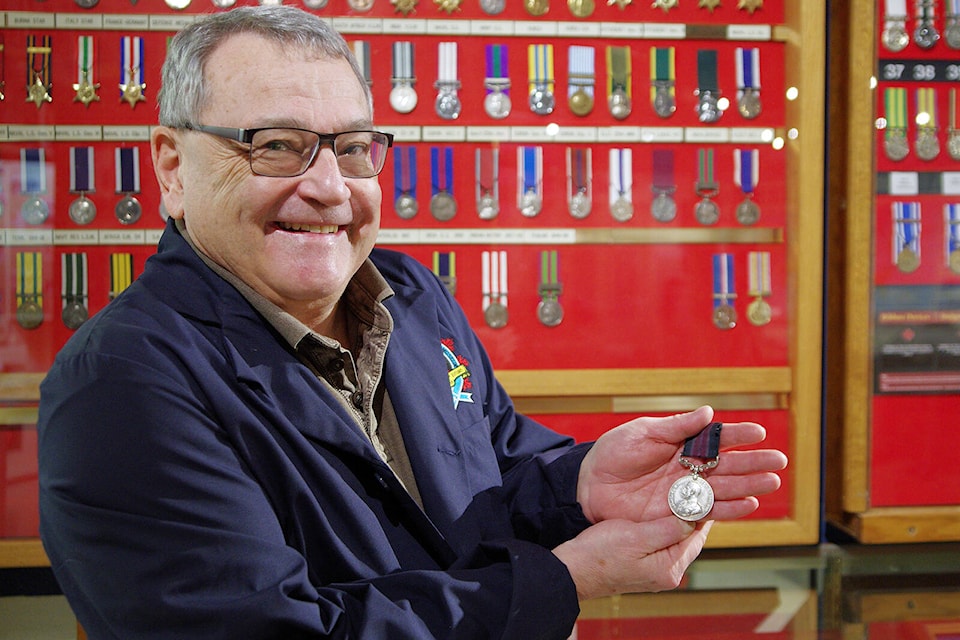Research done by a Vancouver Island Military Museum volunteer has uncovered history about a war medal discovered at a Nanaimo homeless camp and the veteran who earned it.
The First World War medal was brought to the Vancouver Island Military Museum by a city worker who found it. Museum staff reached out to the public to try to reunite the medal with its rightful owner, but after numerous inquiries, no clear ownership could be established.
The medal is the Military Medal issued to enlisted personnel for acts of bravery on the battlefield. The recipient’s name, rank and military unit are etched into the edge of the medal, in this case, Sgt. J. Austin, 50th Battalion.
“There’s no first name on it, so when you go on the Canadian archives … there’s hundreds of Austins and there’s lots of Js … and I’m looking for a sergeant because it says sergeant on the medal. I can’t find him,” said Greg Devenish, a VIMM director and volunteer.
It was an archivist at the Military Museums of Calgary who told Devenish that Austin was actually a lieutenant.
“He was promoted to lieutenant after he received the Military Medal … so once I had that I could find his records,” Devenish said.
He found information about when Austin registered and where he lived in Calgary, and was then able to learn more from a London newspaper that published announcements about medal recipients at the time.
Lieut. John Petrie Austin, Devenish discovered, was born in 1884, in Durham County, England, and served with the 4th Durham Garrison Artillery for a short time. He married Annie Rutter, also from the area, in 1908. In 1910 they emigrated to Canada and by 1911 were living in Calgary. In 1916 he enlisted with the 157th Battalion and was sent to England later that year.
“He had been promoted to acting sergeant prior to departure, so sometime during his training he was made sergeant. It probably had to do with the fact that he had served already with the Durham Artillery,” Devenish said.
Austin was then attached to the 50th Battalion, which Devenish said fought at Ypres, Belgium, in the Battle of Passchendaele. Austin and his battalion were part of the 4th Canadian Division trying to encircle the city of Lens in August 1917.
“It was during that battle, trying to get ahold of the Aloof Trench – a German trench – and in trying to get to that position, that’s where his officer had gone down. He took over and immediately got rid of the enemy position … and for that he won the Military Medal,” Devenish said.
Austin was promoted to the rank of lieutenant in March 1918, posted to the 21st Reserve Battalion, and returned to France soon after. He was wounded in the abdomen that summer, convalesced in London, and was then discharged.
Austin was a carpenter by trade and upon returning to Calgary, worked for the Canadian Pacific Railway. He moved to Victoria when he retired and died in 1958 and is buried at the Royal Oak Burial Park.
“It’s funny – the medal ends up here and the body’s here,” Devenish said.
Devenish said he has not been able to confirm how the medal ended up where it was found.
READ ALSO: Military museum in Nanaimo hopes to reunite First World War medal with owner
photos@nanaimobulletin.com
Like us on Facebook and follow us on Twitter
